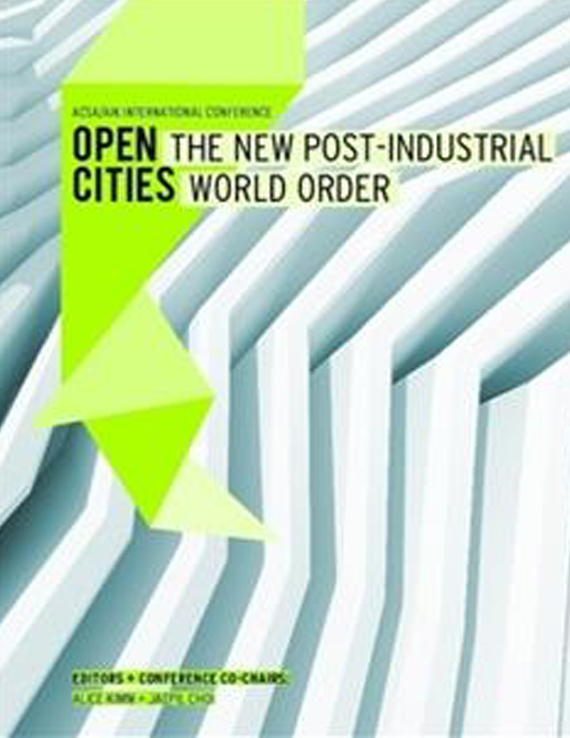Author(s): Yong Huang
Infrastructure has emerged as a cultural project within the contemporary discourseon urbanism. Today, spheres of urbanistic action, as we have recognized,are determined more by urban participants than by physical urban form; how doesinfrastructure — as an ontological practice and a spatial concept in the Heideggeriantradition — culturally frame urbanistic actions and contribute to interventionsfor public spaces in the new post-industrial world?Suzhou — the “Venice of the East” — is paradoxically and uniquely emblematic ofboth the cutting-edge high-tech industrial parks and the best preserved historiccity in China. Taking Suzhou as the model for post-industrial cities in China and beyond,this research examines urbanistic potentials that interface with modern andtraditional infrastructures, and projects a vision of infrastructural elements notonly as ubiquitous networks forming the visible and invisible foundation of today’snew post-industrial world — dominated by the placelessness of homogenization,delocalization, and dematerialization — but also as cultural products and generatorsof new public spaces rooted in regional culture.In Suzhou, traditional perceptions of public spaces and ideologies of spatial relationshipspose heightened potentials for transforming utilitarian infrastructuralelements into culturally framed projects for public spaces:1. Traditionally, public spaces in Suzhou were primarily experienced along linearelements of the city such as streets and, especially, ancient canals, includingthe “Grand Canal.” The culture of public spaces thus evolved in ways that coincidedwith the culture of streets and canals. Urbanistic and cultural interventionsalong countless underused industrial park canals — including interfaceswith streets and overpasses, pedestrianization, and staging canal festivals –will trigger diverse urbanistic programs that shift the patterns of public spacesfrom their current focus on modern squares and parks to a new semi-autonomousfield centered on once-marginal infrastructural elements.2. Public spaces in traditional Chinese cities are often perceived by westernersas formless, particularly at the human scale — the by-product of the thousandyearfeudalist past that privileged hierarchical city form only in its totality. Authoritarianism,however, cultivates micro — freedom, flexibility, autonomy andindependence — qualities associated with rich cultural identities and opposedthe banality and placelessness of modernity. Locals find their public domainsin interstitial spaces between gated communities and factory compounds, optimizingand diversifying the potentials of infrastructure’s urbanistic functions.3. In contrast to modern western concepts, there is no dichotomy between natureand culture in ancient Asian civilizations. Natural elements and culturalpractices were blended in sophisticated ways exemplified by the SuzhouClassical Gardens. Emerging and informal cultural, commercial, and leisurelyprograms, supported by local utilities and paths, will loosely form new networksthat overlap and mix with ever-growing eco-corridors, and connectisolated, exclusive, and gentrified modern parks. This process will generateholistic and inclusive parks and open spaces that are truly public.Urbanistic infrastructure — as an ontological practice — has complex spatial, temporal,and cultural qualities that interact with emerging urbanistic dynamics.Consequently, design interventions — operating on infrastructural systems — aretransformative forces for the democratization of public space, allowing cities totransition to new post-industrial conditions, meanwhile, preserving and diversifyingtheir cultural identities.
Volume Editors
Alice Kimm & Jaepil Choi
ISBN
978-0-935502-91-6

 Study Architecture
Study Architecture  ProPEL
ProPEL 
